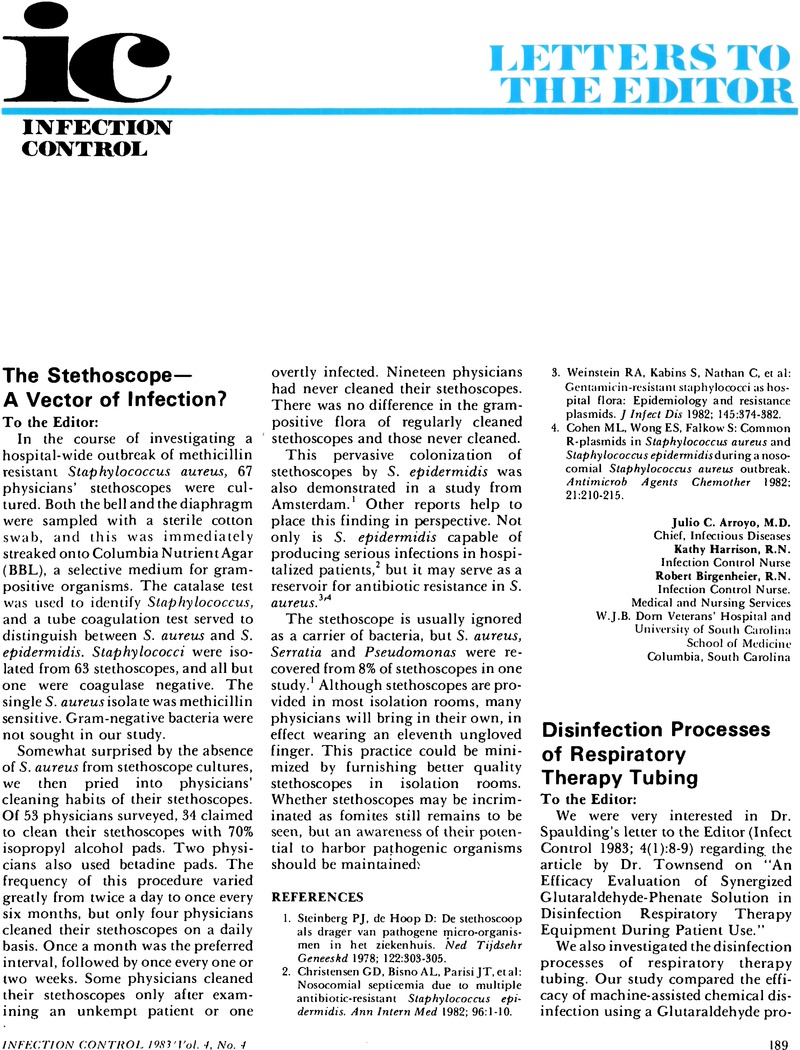Crossref Citations
This article has been cited by the following publications. This list is generated based on data provided by Crossref.
Noskin, Gary A.
Stosor, Valentina
Cooper, Isabell
and
Peterson, Lance R.
1995.
Recovery of Vancomycin-Resistant Enterococci on Fingertips and Environmental Surfaces.
Infection Control and Hospital Epidemiology,
Vol. 16,
Issue. 10,
p.
577.
Peacock, W. Frank
Chemaly, Roy F.
Torriani, Francesca
Shahid, Zainab
and
Dawal, Sanjeet
2023.
A new normal for the clinician's third hand: Stethoscope hygiene and infection prevention.
American Journal of Infection Control,
Vol. 51,
Issue. 1,
p.
114.





